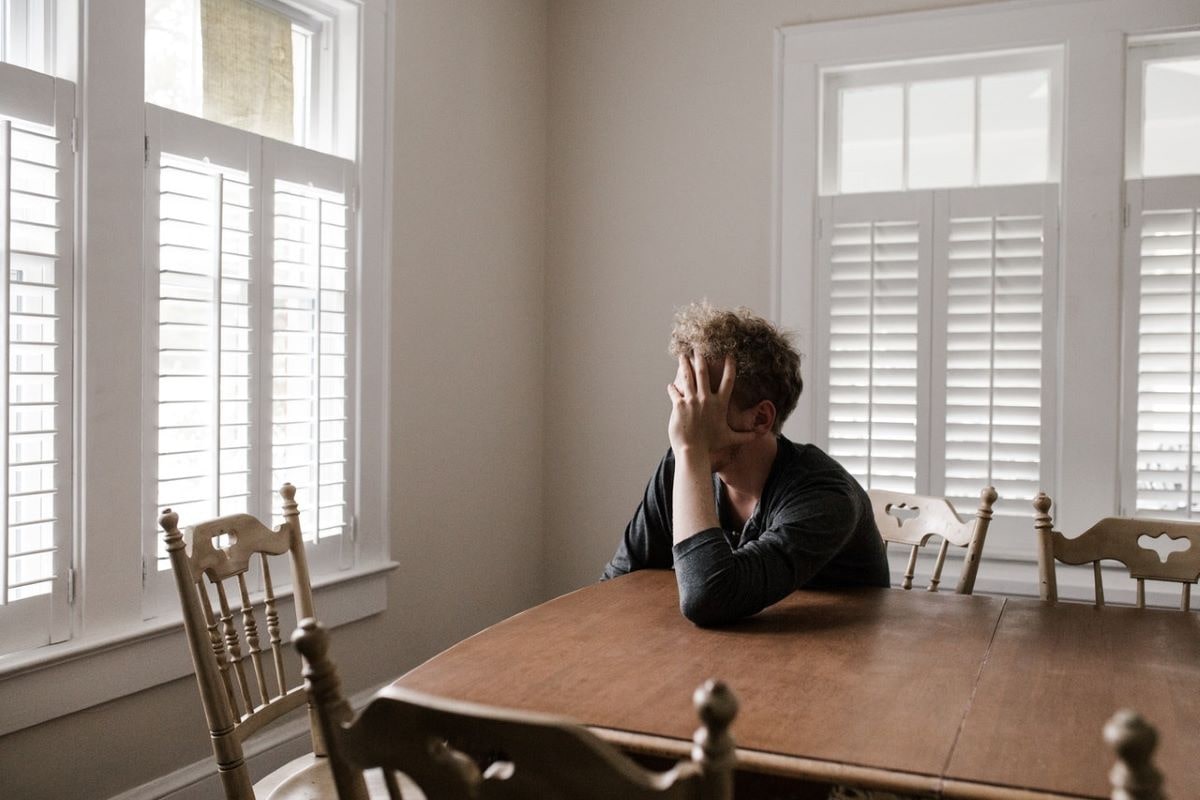Solutions to overcome generalized anxiety
GAD, like all anxiety disorders, is progressive. While it may be possible to cope with their initial manifestations through coping strategies, they gradually take over your daily life and prevent you from living normally. These constant disturbances expose you to many health risks, mainly the development of other disorders (severe depression). However, there are real solutions to generalized anxiety and effective treatments such as cognitive behavioural therapies.

Table of contents
How does generalized anxiety develop?
First of all, GAD sets in slowly and develops gradually. Usually, it requires an anxious background to be able to express itself. That is, if you are more affected than average by negative emotions, if you cannot stand the idea of even the slightest possibility of something going wrong, and/or if you regularly experience headaches, muscle pain, digestive problems, insomnia unrelated to a particular medical condition, you are indeed more likely to be prone to generalized anxiety.
A hereditary predisposition to anxiety?
This anxiety terrain is actually a combination of different genetic and environmental factors. Thus, if your parents suffer from generalised anxiety and your grandparents before them were also diagnosed with GAD, it may be that, to some extent, you are probably genetically predisposed to developing this type of disorder.
However, we cannot ignore the social influence of relatives, which is expressed mainly through education and vicarious learning – i.e. by imitating the behaviour of people around us. Therefore, if your parents have, for example, always protected you a lot by emphasising the dangers of every situation you encounter, you may well develop a strong tendency to focus on the negative outcomes of situations. Similarly, if you have observed one or more members of your family or friends rehashing certain fixed ideas about the negative consequences in preparation for various activities in daily life, you are even more likely to be prone to ruminations.
A characteristic mode of operation
Bias in perception of the world and rumination are the two central cognitive mechanisms responsible for the development of GAD. Generalized anxiety corresponds to a very particular approach to the world in which, for each possible action, one often artificially imagines one or more negative consequences in a way that is strongly disproportionate to the real risk, to the point of making it a real catastrophic thought to which one directly associates the envisaged action.
This thought then goes into an endless loop of ruminations, which are also perceived as the only way to find a satisfactory solution to escape the negative outcomes. This process requires the mobilisation of almost all attentional and emotional resources and therefore represents an extremely heavy mental burden for oneself and one’s loved ones, leaving little room for the rest, especially for positive emotions.
It almost systematically leads to avoidance behaviours that manifest themselves in “parasitic” repetition, procrastination or excessive preparation for events with the end result of not acting. This avoidance in turn reinforces the anxiety because it confirms the individual in his or her functioning since the threat has been effectively thwarted despite the enormous constraints that this imposes.
Health consequences of GAD
This mode of functioning, which involves focusing exclusively on the negative, greatly affects mood. The repetition of situations, the constantly high levels of anxiety and stress and the development of the disorder which gradually spreads to all areas of the individual’s life make it a very important risk factor for the individual’s overall health. People with GAD are significantly more likely to develop cardiovascular disease, diabetes, digestive disorders and even cancer. In terms of mental health, there is evidence that more than one in two people with GAD develop at least one additional anxiety disorder and experience a severe depressive episode in their lifetime.
Generalized anxiety and depression
Specifically, 59% of people with GAD experience a major depression within a year. But the relationship between the two disorders can also be the other way around. Generalized anxiety may well be the result of a depressive state, especially if the latter is chronic. The cyclical nature of these episodes gradually modifies the subject’s perception of the world, which tends to be much more negative and thus favours the rise of anxiety. There is in fact a very close link between depression and generalized anxiety, which often share causes and symptoms such as great difficulty in feeling positive emotions. Therefore, it is also not uncommon for these two disorders to develop together in an individual.
How to treat generalized anxiety?
If you suffer from generalised anxiety, don’t panic! Several psychotherapeutic approaches, including medication, have been shown to be very effective in treating GAD and will help you to free yourself from your anxieties and return to a more peaceful life.
Cognitive and behavioural therapies
Of the various psychotherapies available, cognitive behavioural therapies (CBT) are the most well documented and recommended for treating generalised anxiety. They can take different forms but two main areas of CBT work generally stand out.
Firstly, there is cognitive restructuring. This involves a gradual reworking of your thought patterns with the psychotherapist who is accompanying you so that these no longer limit your choices and you regain the power to act in the situations you face, particularly those that cause you anxiety. In the specific case of generalized anxiety, this work will focus on excessive worries so that you can take the necessary distance from the automatic and catastrophic thoughts that impose themselves on your mind.
The second central aspect of CBT is exposure to anxiety-provoking situations. The aim is to induce habituation so that you become desensitised, i.e. succeed in dissociating and extinguishing the anxiety felt in the situation. The aim is to achieve the exact opposite of what happens in avoidance mechanisms, where not confronting the situation reinforces the anxiety. This is done through progressive, repeated and prioritised exposures in order to develop your ability to deal with these situations step by step. These exposures can be done via your imagination, in reality (in vivo) or in virtual reality (in virtuo).
VRT or Virtual Reality Exposure Therapy
Virtual Reality Exposure Therapies (VRET) have the significant advantage of offering total immersion in a computer-generated world that can be fully configured and that evokes the same emotions and anxieties as if you were really confronted with the object of your anxiety. In other words, by means of a virtual reality headset, you will be immersed in a realistic and anxiety-provoking environment that you and the therapist have chosen beforehand, while remaining in the safety of the psychologist’s office or even your own home. One of the specificities of generalized anxiety compared to other anxiety disorders is the large number of situations that are concerned and that generate very high anxiety. The flexibility allowed by virtual reality exposure therapies therefore seems to indicate them to best treat generalised anxiety as they will facilitate the different exposures needed to desensitise you. Also, the contact with the therapist is never broken during the exposures, you will have the possibility to be in constant exchange. Therefore, it is a preferential access to your automatic thoughts as well as your catastrophic thoughts. It is also an opportunity to put in place proven techniques for managing emotions such as relaxation with breathing exercises which, once acquired, will restore your confidence in your ability to control yourself.
The drug route for treating GAD
Finally, you can also turn to medication such as anxiolytics or antidepressants prescribed by a doctor. Although taking medication is a real solution for bringing genuine momentary relief, it does not constitute a lasting treatment. Indeed, medication alone will not allow you to modify the specific thought structure that ensures the development and maintenance of generalized anxiety disorder. Moreover, their effectiveness is more variable and some patients may be at risk of developing a psychological or physical dependence.

